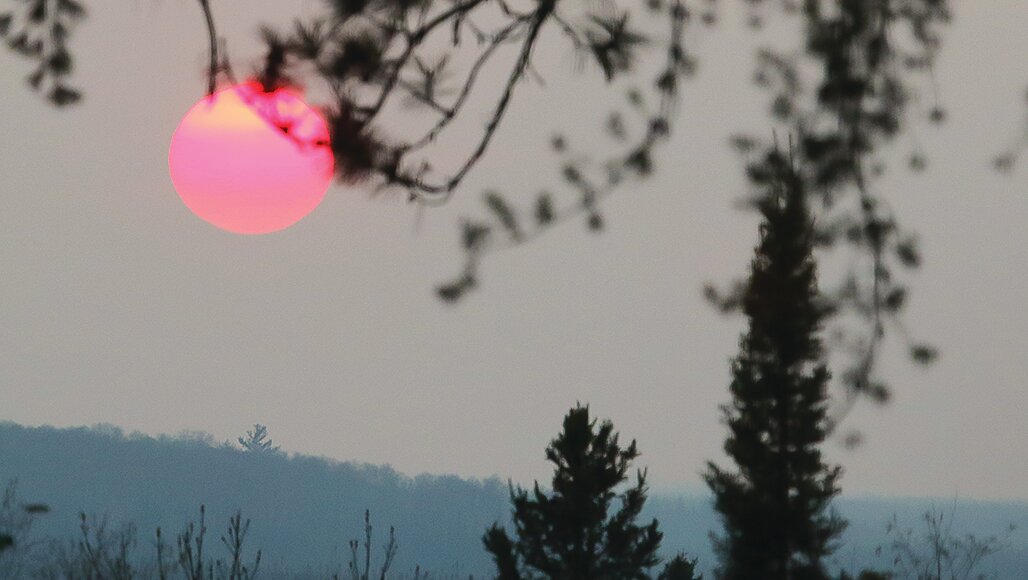Support the Timberjay by making a donation.
Forecast: more smoky skies this summer
Canadian wildfires expected to prompt above-average number of air quality alerts
REGIONAL— This past Sunday’s incursion of heavy wildfire smoke into the North Country from north of the border was a portent of what to expect this summer and into the fall. North Country …
This item is available in full to subscribers.
Attention subscribers
To continue reading, you will need to either log in to your subscriber account, below, or purchase a new subscription.
Please log in to continue |
Forecast: more smoky skies this summer
Canadian wildfires expected to prompt above-average number of air quality alerts
REGIONAL— This past Sunday’s incursion of heavy wildfire smoke into the North Country from north of the border was a portent of what to expect this summer and into the fall.
North Country residents can expect to breathe more wildfire smoke than average this summer, although likely not as much as last year, when the state experienced a record 52 air quality alert days. All of the alerts affecting northern Minnesota last year were related to smoke from Canadian wildfires.
“Wildfires in Canada and other states have a significant impact on Minnesota’s air quality, and last year was profound,” said Matt Taraldsen, lead meteorologist with the Minnesota Pollution Control Agency. “Our meteorologists are closely monitoring air quality around the state, and we are committed to providing accurate information promptly so that everyone can stay informed about changing conditions.”
Earlier than average snowmelt combined with drought in Canada has fueled another active fire season across large swaths of Canada, where high fire danger is currently being experienced across large areas of northeastern British Columbia, northwestern Alberta and southern and central Saskatchewan. Smoke from fires in those regions could reach Minnesota whenever prevailing winds are from the northwest.
Modeling from MPCA and its federal partners highlight the persistence of drought across parts of Canada and Minnesota and other factors that can contribute to large wildfires that ultimately impact air quality.
The incursion of smoke this past Sunday arrived suddenly and quickly pushed air quality indexes into the red zone across much of northeastern Minnesota, a level that is considered unhealthy for all groups. That prompted the region’s first air quality alert of the year. Air quality in the region had improved by Monday as the smoke moved south, although air quality reached unhealthy levels in southern and central Minnesota.
Though not projected to reach the level of 2023, wildfire smoke will impact Minnesotans’ quality of life and outdoor plans this summer as we see more impact from climate change in the state, according to MPCA experts. Wildfires are becoming larger and more frequent during the summer months in the U.S. and Canada. Warmer temperatures and persistent drought conditions make it easy for fires to start and quickly spread out of control. Smoke from these wildfires can travel thousands of miles.
Minnesota drought
For now, it appears most smoke affecting air quality in Minnesota will be coming from fires in Canada. Recent rains have improved the drought conditions in Minnesota, including in northeastern Minnesota, where the drought status improved from moderate drought to abnormally dry in the latest U.S. Drought Monitor report, issued last Thursday, May 9. Fire danger as of Monday of this week was listed as high across the northern two-thirds of St. Louis County and the northern half of Lake County, while the danger in most of Koochiching was rated as very high.






